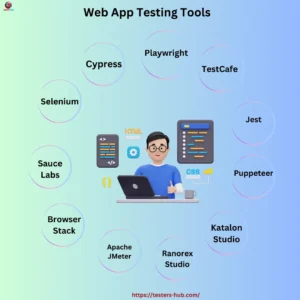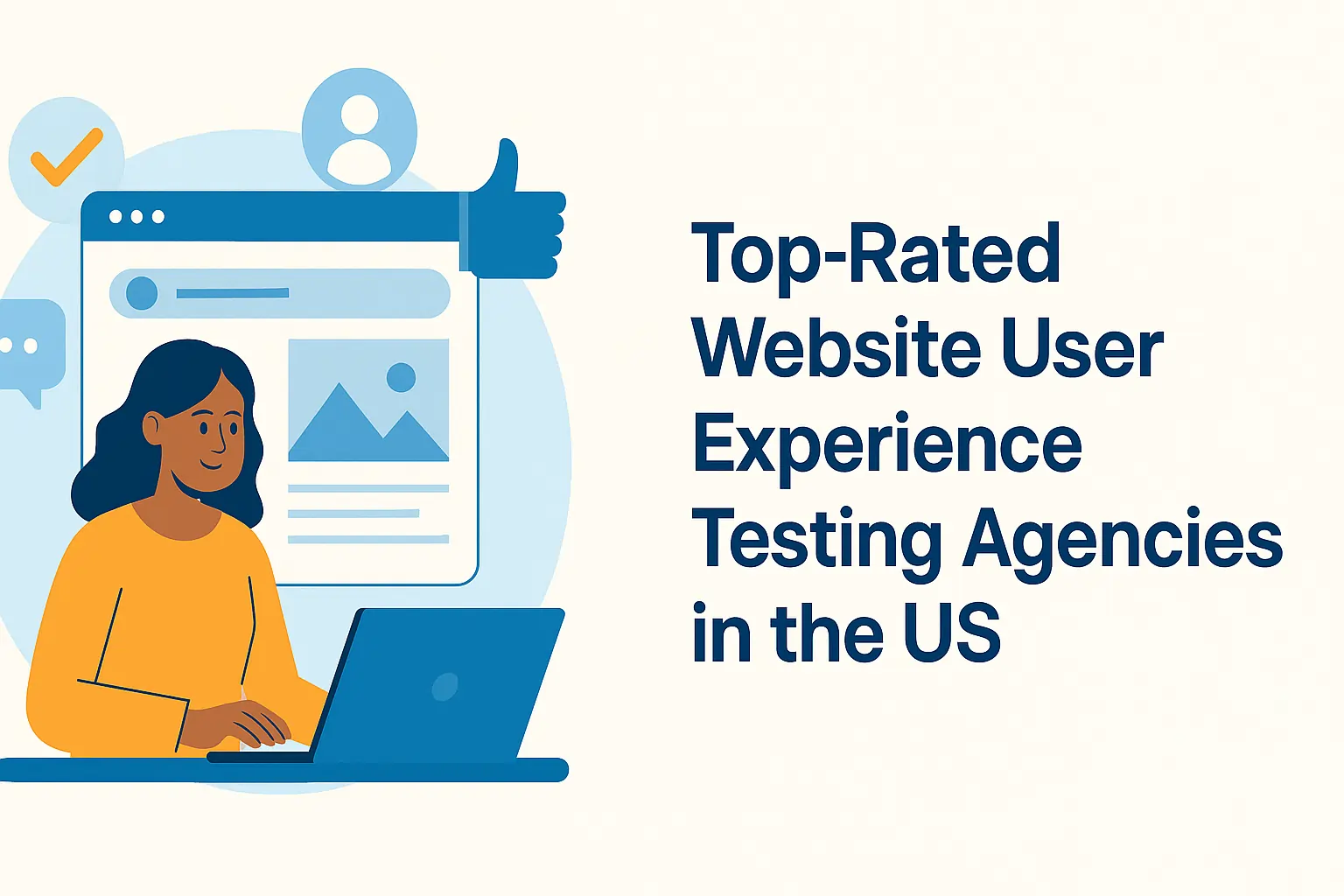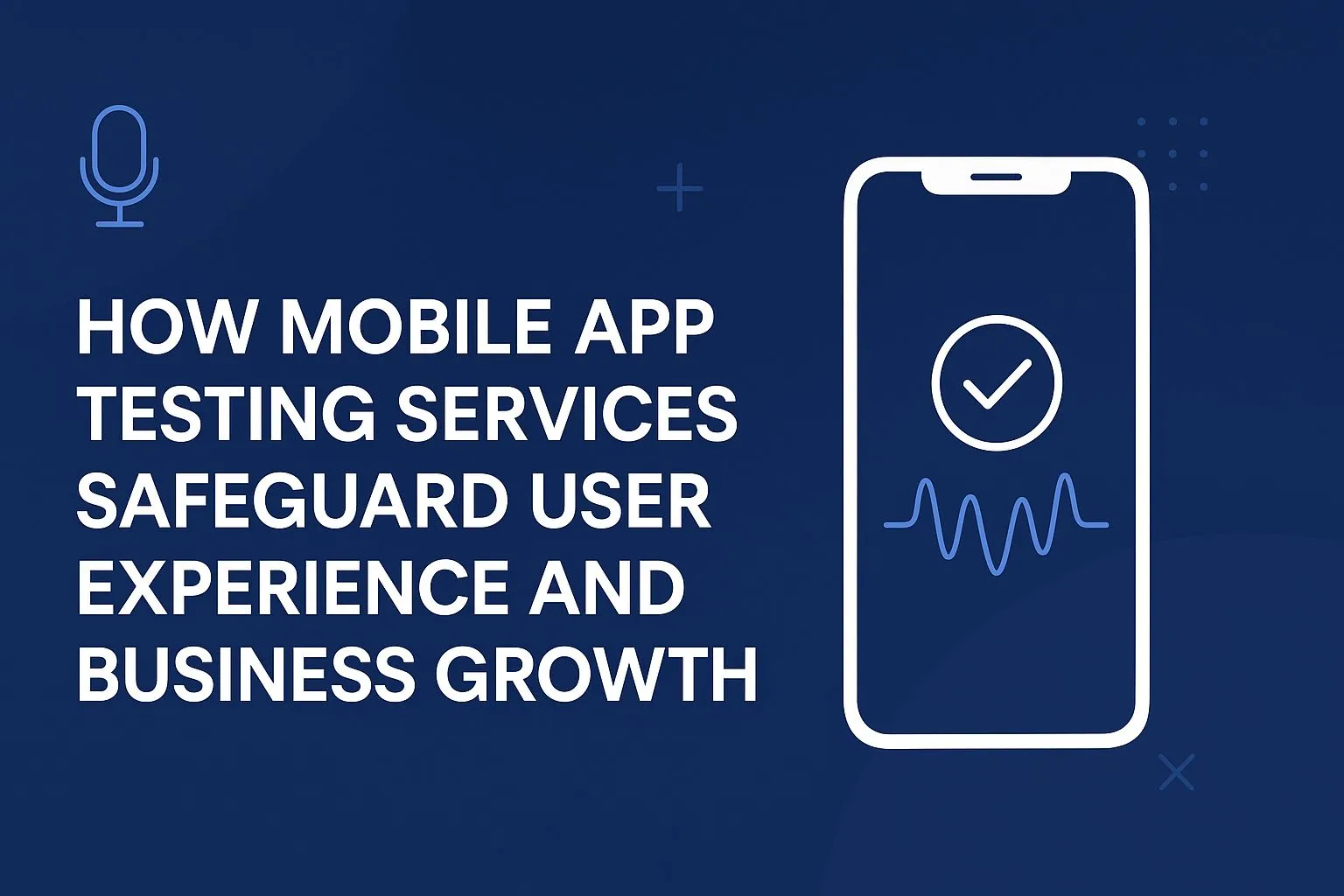Web App Testing Services: Cracking the Code to Hunt and Eliminate Critical Bugs
Web applications are critical to modern businesses, as they bridge the gap between users and digital services. However, bugs, performance issues, and security vulnerabilities can hinder the user experience and damage business reputation. Web app testing services ensure that web applications are reliable, functional, secure, and accessible. This blog explores how professional website testing services identify and fix critical bugs through detailed testing strategies.
Whether it’s performance testing of websites, browser compatibility testing, or automated web testing, each step plays a crucial role in delivering flawless web applications. Let’s explore each process in detail.
1. Web Application Testing Services: Ensuring Comprehensive Bug Detection
Web application testing acts as the initial safeguard against significant bugs. Before launching any web app, it must undergo comprehensive testing to confirm that all components and features operate correctly. This process includes various testing types, such as functional, usability, security, and performance testing.
Requirement Analysis and Test Planning
The first step in testing involves understanding the web application’s purpose, functionalities, and user expectations. A clear test plan is designed based on the requirements to ensure thorough testing coverage.
Why Requirement Analysis Matters
- Identifies the critical areas that need testing.
- Defines the scope of testing, including functional, performance, and security checks.
- Helps testers create comprehensive test cases for scenarios like test website usability and performance testing of websites.
Well-structured test planning ensures no critical feature is left untested and sets the foundation for an efficient testing process.
2. Comprehensive Test Scenarios: Covering All Possibilities
To ensure thorough testing, web app testing services use a variety of test cases to simulate real-world usage. Comprehensive test scenarios ensure that the application behaves as expected under different conditions, capturing bugs that might arise in less typical or edge-case situations. These test scenarios simulate a broad spectrum of user interactions to evaluate both common and rare usage patterns.
Web Functional Testing
Functional testing is all about making sure that the essential features of a web application are functioning correctly. This process includes verifying basic operations like user registration, login/logout procedures, form submissions, and the interactions among different components of the system. By conducting functional testing, we can confirm that the app’s features are working as they should and identify problems such as missing functionalities or flawed workflows. It’s vital to ensure that all features operate correctly under various conditions to avoid bugs that could negatively impact the user experience.
3. Automated Web App Testing Tools: Speeding Up the Bug Detection Process
Automated testing tools have transformed how we test web applications. They enable quick execution of test cases that would typically require a lot of time if done manually. By automating testing, we not only accelerate the process but also enhance accuracy by eliminating human errors in repetitive tasks. Well-known tools such as Selenium, Cypress, and Playwright allow testers to automate functional, regression, and cross-browser tests.
Benefits of Automated Testing
Faster Execution: Automated tests can run much faster than manual tests, allowing for quicker feedback. This speed enables the development team to identify and fix bugs faster, speeding up the overall development cycle.
Consistency: Automation eliminates human error, ensuring that each test is executed consistently. Automated tests are also repeatable, meaning they can be run at any time during the development lifecycle without inconsistencies.
Higher Coverage: Automated testing can easily cover a wide range of devices, browsers, and user scenarios. It can execute hundreds or even thousands of tests in a short period, ensuring that no critical bugs are missed.
4. Manual Web App Testing for Critical Areas: Adding a Personal Touch
While automated tests are invaluable, certain areas of web applications require manual testing. Manual testing is especially important for complex workflows, user interfaces, or areas where human intuition is required to determine if the application is functioning as expected.
Critical Areas for Manual Testing
User Interface (UI):
Automated tools can verify the functionality and presence of UI elements, but they cannot fully analyze the finer aspects of the visual design. Manual testing provides a deeper evaluation of how the interface appears on different screens and devices. It focuses on details like font consistency, color schemes, element alignment, and visual hierarchy. This approach ensures that the interface not only works correctly but also looks polished and visually cohesive across all platforms.
User Experience (UX):
Manual testing is critical for assessing the application’s overall usability and flow. Human testers can interact with the app in a way that mirrors how end users would navigate it, uncovering issues such as poor button placement, confusing navigation paths, or unintuitive workflows. Unlike automated testing, manual evaluation captures subjective feedback about how seamless and user-friendly the app feels, ensuring it delivers a smooth and frustration-free experience.
Real-World Behavior Testing:
Manual testing excels at identifying issues that arise in practical, real-world usage scenarios. Human testers can explore unexpected user actions, edge cases, and diverse device or network conditions that automated tests may not fully replicate. This hands-on approach helps uncover subtle bugs, performance lags, or inconsistencies that can impact the application’s reliability under real-life conditions.
5. Cross-Browser and Cross-Device Web App Testing: Compatibility Across the Board
Web applications are accessed on a variety of devices and browsers. Ensuring that the app works seamlessly across these different environments is critical. Cross-browser and cross-device testing identifies any compatibility issues that may arise due to variations in how different browsers or devices render the application.
Why Cross-Browser Compatibility is Crucial
Web browsers such as Google Chrome, Mozilla Firefox, Safari, and Microsoft Edge interpret web code differently. This can lead to variations in how an application’s layout, features, and design appear. For instance, a web application may function flawlessly on Chrome but appear distorted or behave unexpectedly on Firefox or Safari. Cross-browser testing is essential for identifying and fixing these discrepancies, ensuring that the web application operates consistently and looks uniform across all major browsers. This process ensures that every user, regardless of their browser choice, has a seamless and error-free experience.
Cross-Device Testing
In addition to ensuring cross-browser compatibility, it’s essential to test on various devices. As mobile device usage continues to rise, web applications must perform well on different screen sizes, ranging from desktops to tablets and smartphones. This guarantees a consistent and user-friendly experience across all devices, while also helping to pinpoint potential problems such as improper scaling, distorted images, or buttons that may be too small to click on mobile devices.
6. Performance and Load Web App Testing: Identifying Bottlenecks
Performance plays a crucial role in how satisfied users are. If a web application has slow load times or crashes, it can easily push users away. Conducting performance testing helps ensure that the application runs smoothly under various loads and stress scenarios, allowing for the identification of bottlenecks before they affect the user experience.
Load Testing
Load testing is the process of simulating numerous users accessing the application at the same time to see how it handles high traffic. This testing is crucial for spotting slowdowns, server overloads, or any performance issues that may arise under stress. It helps determine if the web application’s infrastructure can manage the anticipated traffic, thereby avoiding potential performance problems.
Stress Testing
Stress testing goes further by pushing the application to its limits to observe how it fails under extreme conditions. The aim is to identify vulnerabilities or crashes that occur when the system is under significant pressure. This testing ensures that the application stays stable, even during unexpected increases in usage.
7. Security and Vulnerability Web App Testing: Detecting Threats Early
The Importance of Web Application Security
Security risks in web applications can have serious consequences, including unauthorized data access, financial damage, and a loss of user trust. Effective security testing plays a crucial role in identifying potential weaknesses early in the development cycle. By addressing these vulnerabilities before deployment, developers can safeguard the application from real-world cyber threats and prevent costly breaches.
Penetration Testing for Web Applications
One of the most effective methods of identifying security flaws is penetration testing. In this process, security professionals simulate various types of attacks to uncover weaknesses that could be exploited by malicious users. Common attack methods tested include SQL injection, cross-site scripting (XSS), and cross-site request forgery (CSRF). By emulating these threats, penetration testing highlights critical vulnerabilities that must be fixed before the application is made publicly available, ensuring the app is robust against potential exploitation.
Vulnerability Scanning
Vulnerability scanning tools are designed to automatically detect known weaknesses in a web application’s code, configuration, and third-party libraries. These tools help identify security gaps such as outdated software, insecure code, or improperly configured systems. Regular vulnerability scans allow development teams to address potential risks before they can be exploited, ensuring the web application remains secure and compliant with best security practices.
8. Usability Web App Testing: Enhancing User Interaction
Usability testing evaluates the user-friendliness of the web application. An intuitive, well-designed app leads to better user satisfaction and fewer support requests. Usability testing helps identify areas where users may encounter problems, ensuring that the application delivers a positive user experience.
User Experience Testing
User experience (UX) testing goes beyond just visual design and looks at the overall flow of the application. It assesses whether users can easily navigate the app and complete tasks without frustration. This testing also evaluates features such as ease of navigation, clarity of information, and intuitive interaction design.
9. Regression Web App Testing: Ensuring Stability After Updates
After developers fix bugs or implement new features, regression testing ensures that the changes haven’t caused new issues or broken existing functionality. It’s important to run regression tests on both the fixed parts of the app and the surrounding features to make sure nothing else was inadvertently affected.
10. Bug Prioritization and Reporting in Web App Testing Services: Managing Critical Issues
Once bugs are identified, they should be prioritized according to their severity and impact on the business. Critical bugs that compromise core functionality or security take precedence. Maintaining proper bug tracking and reporting allows developers to swiftly address high-priority issues.
Bug Reporting
Clear communication between testers and developers relies on effective bug reporting. A comprehensive bug report should contain:
- Steps to reproduce the issue
- Screenshots or screen recordings
- Error logs
These detailed reports assist developers in pinpointing the root cause of the problem and resolving it more efficiently.
11. Root Cause Analysis (RCA) in Web App Testing Services: Preventing Recurrence
Root Cause Analysis (RCA) is conducted after a bug is fixed to understand why the issue occurred in the first place. By identifying the underlying cause, developers can implement long-term solutions to prevent the bug from recurring in future releases.
12. Collaborative Web App Debugging with Developers: Quick Fixes
Collaboration between QA testers and developers is key to resolving critical bugs quickly. Testers provide developers with clear bug reports, and developers fix the issues. Working together ensures that bugs are resolved faster, and the application remains on schedule.
13. User Acceptance Testing (UAT): Validating with Real Users
User Acceptance Testing (UAT) is the crucial final step in validating an application before its public release. During this process, actual users or stakeholders test the app to verify that it meets the necessary business requirements. UAT is essential for spotting any last-minute bugs or usability issues prior to the launch of the web application.
14. Continuous Monitoring and Improvement: Post-Deployment
Even after deployment, continuous monitoring is necessary to detect any new issues as users begin interacting with the application. Real-time monitoring tools track user interactions, performance, and any errors that occur. Continuous monitoring ensures that any critical bugs that appear post-launch can be quickly identified and fixed.
Conclusion: The Importance of Web App Testing Services
Web app testing services are crucial in ensuring that web applications function optimally. Whether through manual testing for critical areas, automated testing tools, or cross-browser compatibility testing, these services help identify and fix critical bugs before they can negatively affect user experiences. Comprehensive testing strategies help ensure that web applications are secure, reliable, and user-friendly, delivering an exceptional experience across all devices and browsers. By leveraging the full range of testing techniques, businesses can confidently release applications that meet user expectations and business objectives. Testers Hub, a leading name in web app testing services, specializes in providing top-notch testing solutions to ensure your applications meet the highest quality standards. By leveraging the full range of testing techniques, businesses can confidently release applications that meet user expectations and business objectives.












